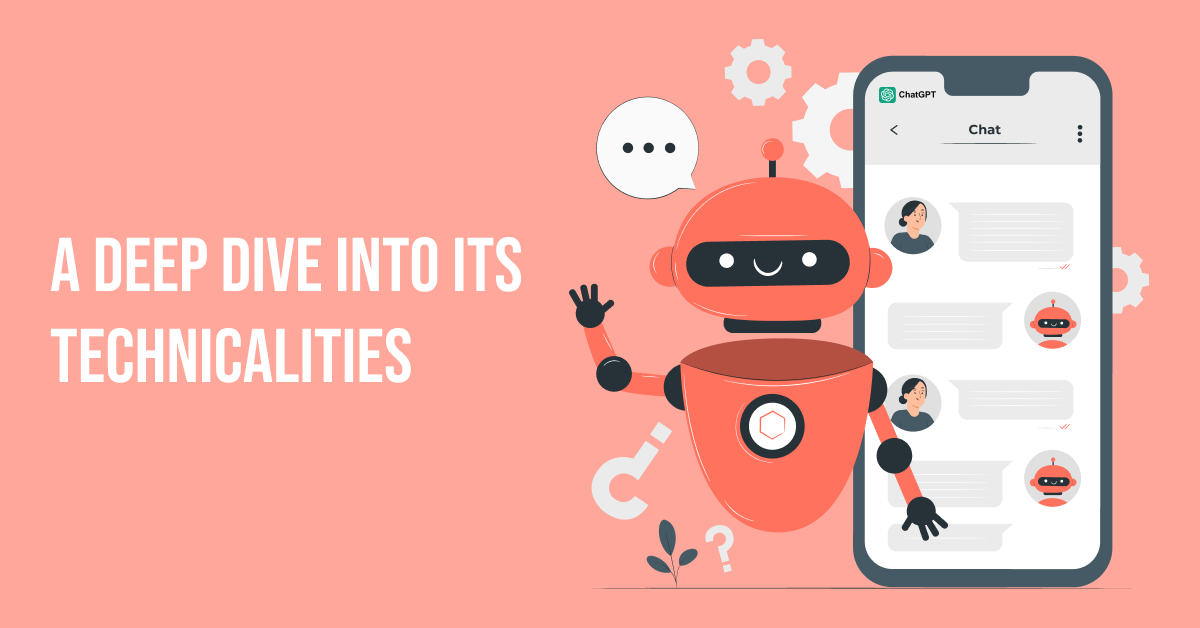You could have read this article on ChatGPT, and it would have been easier for you. It is essential to acknowledge the potential of ChatGPT, which has taken the internet world by storm. Recently, ChatGPT passed the US Medical Licensing Examination (USMLE), a medical exam that students take to attain their licenses.
OpenAI’s chatbot, Chat Generative Pre-Trained Transformer, commonly known as ChatGPT 3.5, is created on top of OpenAI’s GPT-3 family of large language models. Basically, ChatGPT is a vast language model Chatbot that can engage in conversational dialogue and provide responses that are astonishingly human.
What are Large Language Models?
ChatGPT works on Large Language Models (LLMs). What are they? Such models are trained to gather vast amounts of data and predict what word might come next in a sentence. The amount of data is directly proportional to the ability of language models. So, increasing the amount of data in large language models would improve their performance.
LLMs work like autocomplete, but at a more advanced level. These predict the next word in a series, enabling them to write long paragraphs. So, now you know why GPT provides answers to queries in the form of long paragraphs, thanks to LLM.
What is the Technology Behind ChatGPT-3?
Generative Pre-training Transformer 3 by OpenAI, also known as GPT-3, is a revolutionary artificial intelligence (AI) tool that enables chatbots to comprehend and generate natural language with previously unheard-of accuracy and fluency.
What makes GPT-3 special? Equipped with over 175 billion parameters and the ability to generate indefinite words in a single second, which makes ChatGPT unique.
Use of the Vast Network Dataset
A sizable text dataset is pre-trained in a deep neural network, which is then fine-tuned for tasks such as question answering or text generation. The network comprises interconnected layers, or transformer blocks, that analyze the input text and produce a prediction for the output.
Self-Attention Mechanisms
What has enabled GPT to understand the context of a conversation or query and generate accurate or desired responses? The answer lies in using self-attention mechanisms, which allows the data network to analyze the importance of various words and phrases in the input text.
Transformers
The ability of ChatGPT-3 to produce text that is consistent and cohesive, even with limited input, is another important characteristic. Transformers, which can model long-range dependencies in input text and produce coherent word sequences, enable this.
ChatGPT’s Training
As stated above, ChatGPT 3.5 is trained on massive amounts of code and information on the internet, which helps it learn and respond more humanely.
Reinforcement Learning with Human Feedback
Human feedback has an essential role in training ChatGPT using a technique called Reinforcement Learning with Human Feedback. It helped GPT to understand what humans expect in an answer.
Research, Research & Research
Research has an integral role in developing GPT. The experts who created the AI application hired labelers to rate the outputs of two systems: GPT-3 and the new InstructGPT, a replica model of ChatGPT. Based on the research and ratings, experts concluded the following-
- The results were positive, but improvement never hurts
- Labelers vastly favor InstructGPT outputs over GPT-3 outputs
- Labelers considerably prefer the outputs of InstructGPT over those of GPT-3
- Accumulating fine-tuned LLMs with human preferences and feedback gradually improved ChatGPT’s behavior
There could be many differences between GPT and a simple chatbot. However, one thing that sets ChatGPT apart from others is to specifically understand the human intention in a query and provide helpful suggestions and answers.
ChatGPT is not connected to the Internet
It does not have access to external information and is not connected to the internet. The secret is the data used to generate responses, and the data set includes a variety of texts from multiple resources like books, websites, etc.
Pre-training is the Main Reason
The fact that ChatGPT-3 was intended to be a language processing system rather than a search engine is one reason it is not connected to the internet. GPT-3’s main objective is to comprehend and produce human-like writing, not to perform an internet search.
It is accomplished by a procedure known as pre-training, in which a substantial amount of data is fed into the system. It is then customized to perform tasks such as translation or summarization.
Since ChatGPT is trained on a vast dataset, it has learned the relationships between words and concepts, allowing it to generate responses in the context of the conversation. Thus, it generates responses that are relevant to the query or conversation and seem natural to the user.
ChatGPT – Could be the Future?
This AI tool applies deep learning techniques to generate human-like text responses. The training data comes from a large corpus of internet texts, including websites, books, and other written sources. As a language model created by OpenAI, GPT is powered by advanced artificial intelligence and machine learning algorithms, making it promising for the future. Let’s see what the future holds for ChatGPT, as rivals won’t take it lying down.
